|
|















|
|

Cavities
|
|
Large entrances
There are many large cavities in both living and dead trees in our
search area. We measured the size of the entrance holes of 131
large cavities but this was not an exhaustive inventory of cavities in
our study area. We were still finding new large cavities on the
last day of our field season and many of the cavities that we found
were too high or inaccessible to be measured. We watched over 40
cavities at sunrise or sunset but our small team felt overwhelmed
trying to locate active roost cavities with so many holes in trees to
watch.
Many of the cavities that we measured had entrance holes that were
outside the size range recorded for the cavities of Pileated
Woodpeckers and within the range of nest cavities of Ivory-billed
Woodpeckers recorded in the Singer Tract of Louisiana in the
1930s. The vertical dimension of the entrances of twenty of the
cavities that we measured exceeded 12.7 cm (5 inches), and the width of
67 cavities exceeded 10.2 cm (4 inches). There are surprisingly
few published dimensions for the entrance holes of the cavities of
Pileated Woodpeckers and many of the published measurements are from
the larger western and northern populations of pileateds. So, we
measured 21 large cavities around Auburn, Alabama where pileateds are
common but there are almost certainly no ivorybills. No cavity
around Auburn had a vertical dimension that exceeded 12.7 cm and only
one was more than 10.2 cm wide. |
|

|
|
Cavities can occur alone, as with this cavity in the top of dead sweet
gum (at left) or in stacks, as with these cavities in a live water
tupelo (at right).
|
|
|
|
|
|
|
|
|
|
|
|
|






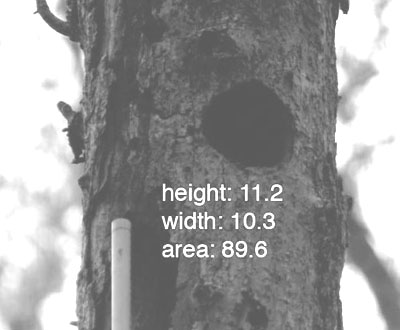










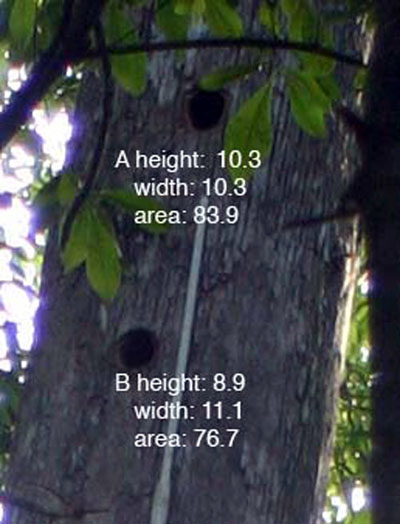

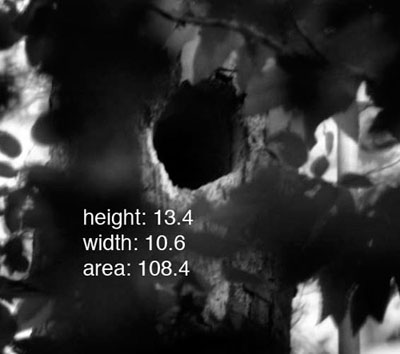
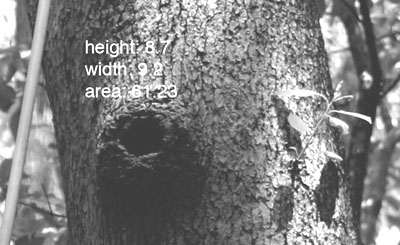










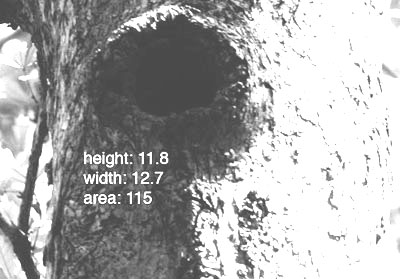










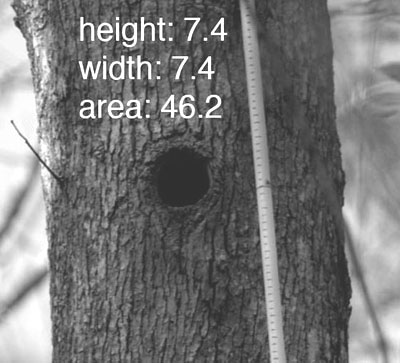









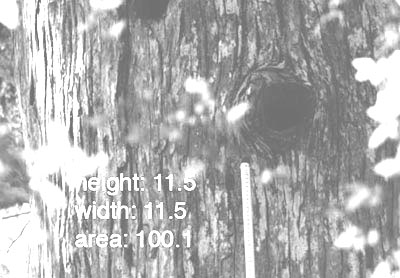



















|
|
|
|
|
|
|
|
|
|
|
All information on this
website is
copyright Geoffrey Hill and Daniel Mennill.
No information on this page may used without explicit permission
(ghillATacesagDOTauburnDOTedu or
dmennillATuwindsorDOTca). |
 |

|

|

|

|

|
 |
 |